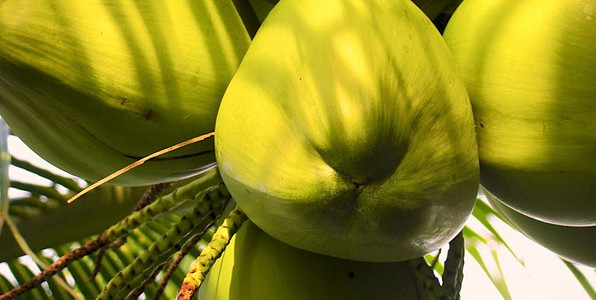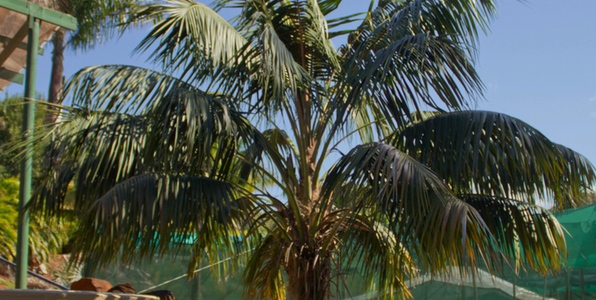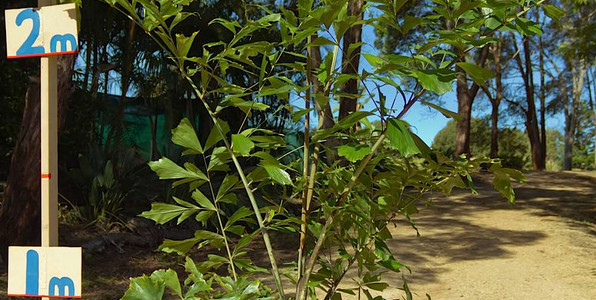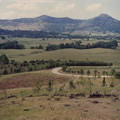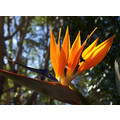Jump to page 2 | 3 | 4 | 5 | 6 | 7 | 8 |
Palm Delicacies - What Palm Fruits are Good to Eat
Humans have cultivated and used palms from the beginning of civilization. Date palms, for example, have been used by the middle-eastern settlements for over 5000 years. Other uses of palms include the harvesting or extraction of coconut, oils, syrups, ivory nuts, carnauba wax, rattan cane, raffia, and palm wood.
Other varieties of palms also provide, betel nut, heart of palm (used as a vegetable), nypa (a sap used to make vinegar), dragon's blood (a reddish resin which is used in the manufacture of medicines, varnish, and dyes), coir (which is a fiber that is comes from the shell of coconuts and has a multitude of applications), sago, palm wine (made from Jubaea or Chilean wine palm), and a host of other uses.
Growing Wine Palms (Butia capitata)
The Wine palm genus of about eight species come from South America and can be a very good palm to grow in cold parts of Australia. They give lots of benefits and enhance the landscape. Depending on the setting, you can do a lot of things with a wine palm. Below are some aspects and fundamentals of growing wines.
Species Overview
The wine palm is a type of palm that is best known for its thick trunk. In fact, among all palm, the wine palm has the thickest trunk to date. The origin of wine palm goes back to the Andes Mountains then it spread all over the globe. The palm can grow to 20 metres.
The trunk diameter differs from one plant to another and depending on the kind of environment it is exposed to. As for the height of the trunk, remember that it takes years even decades for a palm like this to grow even just beyond the 6 metre mark in cold climates. If you want to grow a large plant, be patient. This is one reason why the wine palm has turned out to be one of the most costly palms around.
In many ways, the purchase of a palm like the wine palm is considered a sign of affluence. Because of its size and the way it grows, people usually treat having a wine palm as a symbol of their prominence. The Wine palm is inclined towards sun and heat but is also suited to the colder parts of Australia. It is the most common Wine grown here. The Butia capitata is named the Wine and Jelly palm because its seeds have fruit around them that are edible and taste like wine and jelly. This plant will tolerate -10 degrees c, grows to 5 metres and is quite drought resistant.
Growing Wines
The Wine seedling should be placed in a small well drained container ( 3" tube), under shade and away from excessive rain or watering. A waterproof greenhouse is best. When it has outgrown this container move it to a larger container ( 8" pot) under shade exposed to rain. When the plant is half a metre with several fronds then it can be planted in the ground during the growing season. Use slow release fertilizer when required.
This type of palm prefers its surroundings to be dry if the temperature is cold, ideal for Adelaide. Additionally, make sure the soil has good draining capabilities. Clay soils can be used if the drainage is OK but the moisture content should be low. In good growing conditions they may become top heavy and lean over while waiting for their root system to anchor the large trunk.
Caring For Your Kentia Palm (Howea forsteriana)
Palms are beautiful additions to any garden or indoor space if you're going for the beach or island vibe. Some palms are more difficult to maintain and care for than the others, but the Kentia Palm is one of the all-time favourites for homeowners and landscapers because of its low-maintenance yet strikingly tropical appearance.
The Kentia Palm has a thin, slender trunk with feather-shaped, drooping fronds. When young, the trunk is dark green and turns to brown as it gets older. The Kentia flowers yearly around November or December
A Beginner's Guide to Fishtail Palm Tree Care (Caryota Genus)
Fishtail palms are found from Cape York through SE Asia to China and India; they grow in rainforests of varying altitudes. The Australian Fishtail (Caryota albertii) is a climber and makes a good indoor palm. The Clustering Fishtail (Caryota mitis) is a spectacular palm for coastal Sydney and above in a protected place. When one trunk dies after seeding (as they do) there are lots more in its place.
Fishtail palms are wonderful additions to any garden or living space that can add a tropical island feel effortlessly. The leaves of the plant have jagged-edges that look like fins and fishtails, hence the name.
Tips about Caring for Majestic Palms (Ravenea rivularis)
Majestic palms (Ravenea rivularis) are characterized by their bright green, symmetrical leaves, untidy crown and slightly swollen base. They are a favourite among landscapers and gardening enthusiasts when they're going for that distinctly tropical island feel. They will tolerate cold to -3 degrees c, shaded areas and other plants towering overhead.
If you are thinking about adding a Majestic palm to your garden, here are some tips that you can review.
Fertilize! Fertilize! Fertilize!
Probably the only maintenance that you will need to do regularly is to apply fertilizer to avoid any nutritional deficiency. You can use a regular palm fertilizer with a 3-1-3 ratio for smaller plants and 15-5-15 ratio for bigger plants of nitrogen, phosphorus and potassium. Be careful when applying the fertilizer and follow the package instructions.
The Highs and Lows of the Bangalow Palm
Palms are beautiful plants that add to any garden or indoor space creating a tropical lifestyle. There is a variety of palms to choose from and each has its highs and lows.
One of the more popular palms in Australia is the Bangalow (Archontopoenix cunninghamiana). The plant has bright green leaves and a thin trunk, making it seem that the leaves are too heavy or big for the trunk below. It provides a comforting canopy and a decent shade against sunlight.
